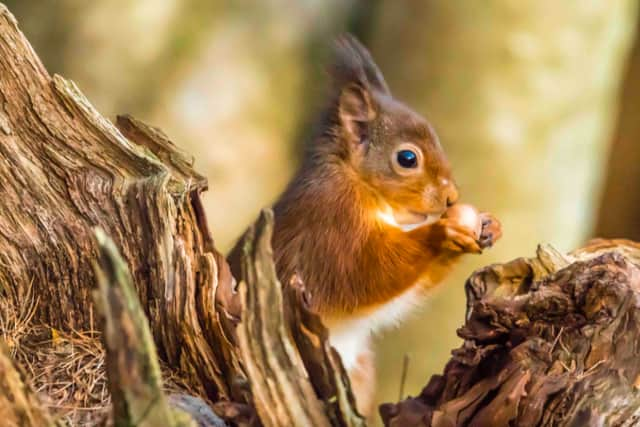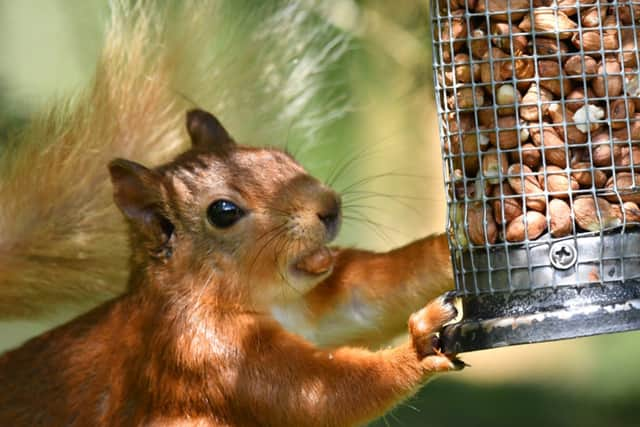Where did all the red squirrels go at Formby Pinewoods and how can I help?
and live on Freeview channel 276
January 21 marks Red Squirrel Apprection Day, dedicated to sharing information about the role the creatures play in supporting the environment and how we can help protect them.
Sadly, though once a common sight across the UK, red squirrels are now an endangered species. Formby is one of the few areas lucky enough to home the cute creatures.


Advertisement
Advertisement
Unfortunately, the North American Grey Squirrel has caused a decline in red squirrels, sharing diseases such as squirrel pox, which is symptomless for greys but fatal for the red squirrel.
According to National Trust, in 2007, ‘the deadly squirrel pox virus reached the Formby area, wiping out around 80% of the red squirrel population. A hard winter further reduced the population to only 15% of the pre-pox level. However since then the population has recovered, and it’s now back to approximately 85% of the levels in spring 2002.’
However, despite the efforts of Freshfield Reserve, Merseyside and Lancashire Red Squirrel Trust and the National Trust, spotting a red squirrel in Formby is becoming a rare occurence, with many recent TripAdvisor reviews for the park stating they were disappointed to not see a single one.
Why are we losing our red squirrels?
Due to their overall population declines, red squirrels are classed as endangered on The Mammal Society’s Red List for Britain’s Mammals.
Advertisement
Advertisement
According to UK Squirrel Accord, ‘the population has fallen from a high of around 3.5 million in the UK, to the current rough estimate of 287,000. Around 75% are found in Scotland, with the population in England thought to be as low as 29,500.’
The organisation listed threats as predators, disease, roads and land-use change. However, the introduction of the invasive non-native grey squirrel from North America is the main reason behind the sharp decline since the 1800s.


North Merseyside and Western Lancashire is a red squirrel stronghold, and in their latest report, Merseyside and Lancashire Red Squirrel Trust (MLRST) said there was a ‘significant decrease’ of red squirrels in North Formby transects, but noted an increase in South Formby.
The Trust said it seems they are recovering from the squirrel pox outbreak of 2019, and noted an increase in red squirrels sighted across Ainsdale.
Advertisement
Advertisement
They also mentioned an increase in grey squirrels across the stronghold.
Why do we need red squirrels?
Red Squirrels spread the seeds of coniferous trees as well as fungi spores, which are important to the survival of trees.
Pete Muldoon from Red Alert Lancashire and Merseyside told LiverpoolWorld: “Red Squirrels provide an indication of a healthy ecosystem, having evolved alongside the flora and fauna of the British Isles their presence shows whether the rest of the environment is healthy.
“They are much less destructive that the grey squirrel, and are a valuable contributor to the growth and health of woodlands by burying nuts and seeds.”
What is being done to protect them?
Advertisement
Advertisement
Thanks to the perseverance and dedication of volunteers the population of red squirrels has increased to almost 90% of the pre-pox numbers, according to MLRST.
Since 2002, they have been carrying out annual monitoring of red squirrels, noticing changes in outbreaks of illness. MLRST and Formby Reserve work to provide a healthy environment for red squirrels to thrive, and share tips on how to protect them.
Red Alert Lancashire and Merseyside, ran by volunteers, also engage with all aspects of red squirrel conservation. Running for over twenty years, the team look after and rescue sick or engaged red squirrels, as well as running a monitoring program of red and grey squirrel populations across the region.
UK Squirrel Accord have also released their new England Red Squirrel Action Plan (ERSAP) 2023-2028, in honour of Red Squirrel Appreciation Day. It has four key aims:
- Protect, identify and strengthen red squirrel populations across the current range
- Expand the current range of red squirrels
- Support and improve collaborative action at all levels
- Promote better understanding and support for red squirrel conservation across England.
Advertisement
Advertisement
UKSA said: “Successful delivery of the plan will depend on strong collaboration between stakeholders at local and national levels, including community groups, conservation organisations and government agencies. Effective communications that raise awareness of and engagement in red squirrel conservation are also vital. A new stakeholder group is being set up to start delivering the actions.”
Environment Minister Trudy Harrison added:“Red squirrels are such striking and wonderful animals, and much loved by the British public. The government is absolutely committed to supporting their recovery. We have made legal and binding commitments to create thousands of hectares of new wildlife-rich habitat under the Environment Act and are supporting urgent measures to reduce the threat posed by grey squirrels.”
How can I help?
Merseyside and Lancashire Red Squirrel Trust have said that anyone who finds a poorly red squirrel should take them to the vet immediately - vets will not charge for wildlife.
They also remind the public that squirrels can bite, so wear thick gloves and put the squirrel in a cat carrier if you can.
Advertisement
Advertisement
It is also important not to feed red squirrels when you come across them, incase of contamination.
They shared tips for spotting sick squirrels on Facebook, noting common symptoms:
- Lethargy and unusual behaviour.
- Sores and lesions around the eyes, nose, mouth, feet and/or genitals.
- Patches of missing fur (however, moulting squirrels may also have this)
